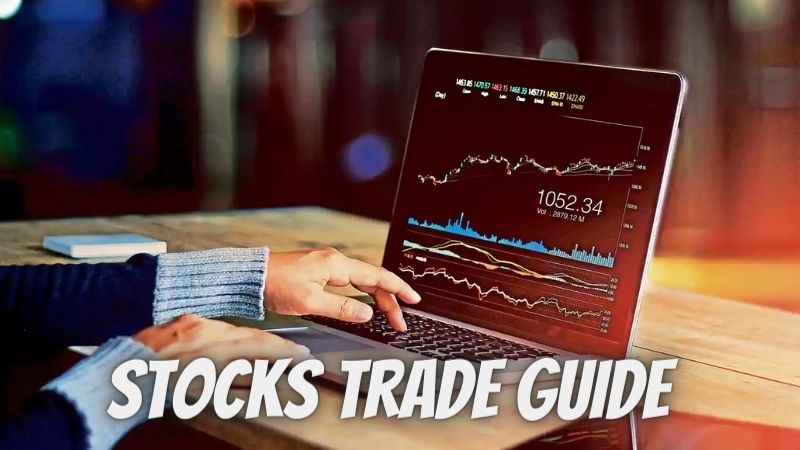Stock trading is a complex and vast subject. There are so many different strategies that it can be hard to know where to start.
It’s true that you don’t need a degree in finance or economics to become a successful trader, but it takes time, dedication and perseverance. In the words of Warren Buffet: “If you’re not willing to own stocks for ten years, don’t even think about owning them for ten minutes.”
While you can trade stocks on your own if you have the time and resources to research, there are also many benefits to using a broker. Here are some basics that will give beginners an introduction to how stock trading works and the best stocks to buy now.
What are shares?
Stocks are shares of companies. They can be publicly traded or not. In simpler terms, a stock is owned by a company, similar to a bond.
How are shares traded?
A stock is traded exchanging “contracts for difference”, abbreviated as CFDs or derivative contracts. A CFD allows you to trade a stock or index without having to own the asset itself. That way you don’t need to buy or sell the stock directly.
For example, if you buy Bank of America stock, you are trading a CFD contract, but you do not need to own Bank of America stock to do so. As a result, you can speculate on a better price for Bank of America shares without the hassle of actually owning the underlying shares.
Please note that most CFD contracts will limit your maximum losses, or risk, per trade.
Choosing a broker
Before trading stocks, it’s worth reviewing your preferences and goals.
Are you interested in learning about and investing in stocks for the first time? Then, you might consider investing in an ETF. ETFs are passively managed funds that track a wide range of stocks, indices and even commodities. There are hundreds of ETFs available that track virtually every stock, index and commodity in the world.
Some ETFs are free, while others cost a few dollars per transaction, but ETFs generally pay dividends based on their performance.
Are you interested in learning and investing in stocks to build a retirement portfolio? There are few better ways to do this than through individual actions.
Professionals actively manage individual stocks.
Buying Stocks
To buy stocks, you must buy a brokerage account. Many brokers charge a fee to open an account and sell stock. Fees are usually based on how much money you are investing.
For example, Charles Schwab and E*Trade charge a flat fee of $10.95 to purchase shares, while TD Ameritrade does not charge trading fees and Fidelity offers commission-free trades on more than 8,000 ETFs.
To be blunt, trading fees can increase quickly, so it’s best to spend a little money upfront to get started. Once you have your brokerage account, you can start buying stocks.
Once you have a stock in your trading account, you can sell it if you like. To get started, choose an action you believe in.
Selling Stocks
One of the most important parts of stock trading is selling your stocks. Buying shares means you are buying shares. Selling means you are giving up your shares for cash.
Selling is the most profitable part of trading stocks, because you get money in exchange for your stock, while you get a discount on the purchase. For example, an investor who bought $1,000,000 worth of Apple shares (NASDAQ: AAPL) earlier in the year and sold them in late September earned $200,000 of those shares.
While selling stocks isn’t very profitable financially speaking, that doesn’t mean you shouldn’t! As with any business venture, you want to make sure you’re getting the most for your money.
The Stock Market Cycle
There are many similarities between stock markets and economies, but there are also some important differences.
The stock market cycle is a good starting point for understanding how the two are intertwined.
The stock market cycle is a seven-year cycle, ranging from economic expansion to economic recession.
From boom to bust, stock market cycles follow a pattern known as the economic cycle. If you look at an economic growth chart, you will see that the ups and downs are a bit like the ups and downs of the stock market.
The economic cycle has three phases. During the boom, growth and productivity increase, leading to a substantial increase in profit and shareholder value. The problem arises when the boom is interrupted by an economic recession.
Conclusion
Stock trading can be profitable and can lead to long-term financial gain if you are patient and keep working on it.
However, you must keep in mind that this job is not for everyone. If you are inexperienced or easily frustrated, skip this article.
The $16,122 Social Security Bonus Most Retirees Completely Ignore
If you’re like most Americans, you’re a few years (or more) behind on your retirement savings. But a handful of little-known “Social Security secrets” can help ensure an increase in your retirement income. For example: an easy trick can pay you up to $16,122 more… every year! Once you learn how to maximize your Social Security benefits, we think you can retire with the peace of mind we’re all looking for.




